Refine search
Actions for selected content:
15418 results in Military history
Map 3
-
- Book:
- How the War Was Won
- Published online:
- 05 February 2015
- Print publication:
- 12 February 2015, pp xxiii-xxiii
-
- Chapter
- Export citation
Map 7
-
- Book:
- How the War Was Won
- Published online:
- 05 February 2015
- Print publication:
- 12 February 2015, pp xxvii-xxvii
-
- Chapter
- Export citation
10 - The air and sea war against Japan, 1942–4
-
- Book:
- How the War Was Won
- Published online:
- 05 February 2015
- Print publication:
- 12 February 2015, pp 374-429
-
- Chapter
- Export citation
List of Tables
-
- Book:
- How the War Was Won
- Published online:
- 05 February 2015
- Print publication:
- 12 February 2015, pp xiv-xv
-
- Chapter
- Export citation
5 - Understanding the air and sea war from December 1940 to March 1942
-
- Book:
- How the War Was Won
- Published online:
- 05 February 2015
- Print publication:
- 12 February 2015, pp 169-195
-
- Chapter
- Export citation
2 - The air and sea war and the phases of equipment destruction
-
- Book:
- How the War Was Won
- Published online:
- 05 February 2015
- Print publication:
- 12 February 2015, pp 67-94
-
- Chapter
- Export citation
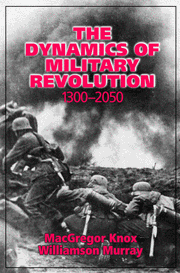
The Dynamics of Military Revolution, 1300–2050
-
- Published online:
- 05 February 2015
- Print publication:
- 27 August 2001
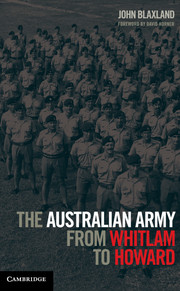
The Australian Army from Whitlam to Howard
-
- Published online:
- 05 February 2015
- Print publication:
- 16 October 2013
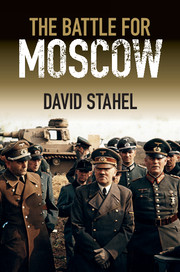
The Battle for Moscow
-
- Published online:
- 05 February 2015
- Print publication:
- 22 January 2015
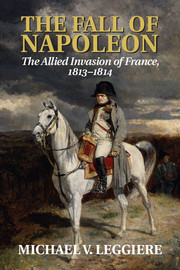
The Fall of Napoleon
-
- Published online:
- 05 February 2015
- Print publication:
- 12 November 2007

The Proud 6th
- An Illustrated History of the 6th Australian Division 1939–1946
-
- Published online:
- 05 February 2015
- Print publication:
- 07 November 2008
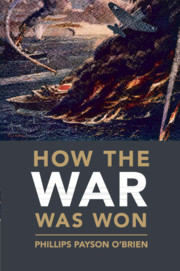
How the War Was Won
- Air-Sea Power and Allied Victory in World War II
-
- Published online:
- 05 February 2015
- Print publication:
- 12 February 2015
INDEX
-
- Book:
- Naval Chronology
- Published online:
- 05 June 2015
- Print publication:
- 29 January 2015, pp 485-531
-
- Chapter
- Export citation
SUPPLEMENT
-
- Book:
- Naval Chronology
- Published online:
- 05 June 2015
- Print publication:
- 29 January 2015, pp 449-454
-
- Chapter
- Export citation
CHAP. IV - CAPTAINS
- from APPENDIX
-
- Book:
- Naval Chronology
- Published online:
- 05 June 2015
- Print publication:
- 29 January 2015, pp 264-392
-
- Chapter
- Export citation
The following LIST OF SUBSCRIBERS came to hand too late to be inserted in the First Volume
-
- Book:
- Naval Chronology
- Published online:
- 05 June 2015
- Print publication:
- 29 January 2015, pp 415-415
-
- Chapter
- Export citation
ERRATA
-
- Book:
- Naval Chronology
- Published online:
- 05 June 2015
- Print publication:
- 29 January 2015, pp 484-484
-
- Chapter
- Export citation
PROCLAMATION
-
- Book:
- Naval Chronology
- Published online:
- 05 June 2015
- Print publication:
- 29 January 2015, pp 226-334
-
- Chapter
- Export citation
SUMMARY OF NAVAL AND MARITIME
-
- Book:
- Naval Chronology
- Published online:
- 05 June 2015
- Print publication:
- 29 January 2015, pp -
-
- Chapter
- Export citation
CHAP. I - State of the Royal Navy at the Death of Queen Elizabeth, 1602
- from APPENDIX
-
- Book:
- Naval Chronology
- Published online:
- 05 June 2015
- Print publication:
- 29 January 2015, pp 1-174
-
- Chapter
- Export citation
